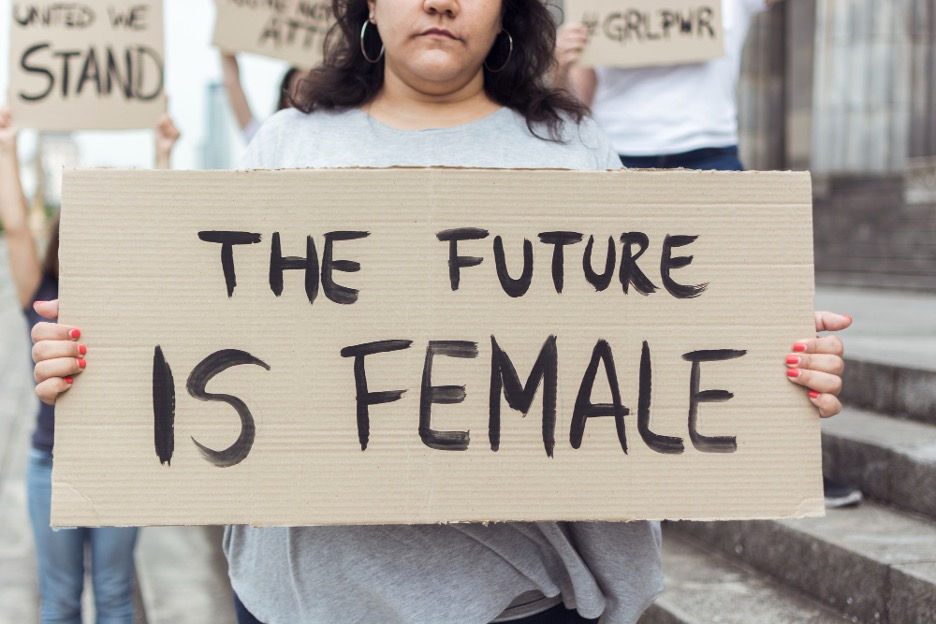‘Fourth-wave feminism’ on the ballot as Harris seeks to make history
- Loujain Habibi

- Oct 31, 2024
- 4 min read
Updated: Nov 7, 2024
This story originally appeared on CCspin, the news site of Contra Costa Youth Journalism.
Feminism is a social movement that has primarily been led by white women. However, the current (fourth) wave is showing more signs of inclusivity.
This has not only spurred conversations about intersectionality, people also are talking about the effect intersectional identities have on the expectations placed on women, particularly presidential candidates.

The term “intersectionality” was coined by Kimberlé Williams Crenshaw in 1989 to describe how the various aspects of one’s identity intersect with other aspects to create privilege or oppression. An intersectional identity affects one’s life experiences, the perception others have of them and the expectations that are placed on them.
“To me ‘fourth-wave feminism’ has been the most inclusive and widespread era of feminism,” said Catiana Lengyel, a sophomore at Sonoma State University. “With access to the internet, especially social media, feminist ideas and ideals have reached so many people and we now have so many different experiences and points of view that I believe have been lacking in previous generations.”
According to Encyclopedia Britannica, feminism is defined as “the belief in social, economic, and political equality of the sexes.”
Mikhaila Derit, an 11th grader at Liberty High School in Brentwood, said the term, though simply defined, is much broader to her.
“It’s opened up not only opportunities on a financial standpoint, but also opportunities on how we can physically express ourselves through fashion,” she said.
A 2020 Pew Research Center survey found that about 6 in 10 women in the U.S. said that “feminist” describes them somewhat (42%) or very well (19%), with one’s political party being one of the major factors that influence this belief. While 42% of Republican and Republican-leaning women say that “feminist” describes them well, 75% of Democratic and Democratic-leaning women say the same.
Waves of feminism
Martha Rampton, a history professor and the director of the Center for Gender Equity at Pacific University, explained in an article for the school that the goal of the first wave of feminism (late 1800s to early 1900s) was women’s suffrage, and the movement was led by “middle class, Western, cisgender, white women.”
Rampton said the second wave (1960s to 1990s) focused on sexuality and reproductive rights, and it “drew in women of color and developing nations, seeking sisterhood and solidarity.”
However, the movement still was led by white women.
“Like first-wave feminism, the second wave was largely defined and led by educated middle-class white women who built the movement primarily around their own concerns,” wrote Elinor Burkett, a professor of journalism at the University of Alaska-Fairbanks, in an article for Britannica.
The third wave (beginning in the mid-1990s) was, “global, multicultural, and it shuns simple answers or artificial categories of identity, gender and sexuality,” Rampton explained.
The fourth wave of feminism is believed by many to have begun around 2012, with its focus being, “sexual harassment, body shaming, and rape culture, among other issues,” wrote the editors of Encylopedia Britannica. “A key component was the use of social media to highlight and address these concerns.”
“I think what is especially important in fourth-wave feminism is intersectionality because now feminism acknowledges that people are complex and have many different identities that combine to make each of us unique,” said Lengyel, a psychology major at Sonoma State. “This has made it easier for many people to identify, grow and benefit from feminism.”
High expectations for Clinton, Harris
Hillary Clinton’s intersectional identity, particularly her gender and her race, made some expect more from her during her 2016 presidential campaign.

“I expected her to work to protect women’s bodies and rights,” Lengyel said. “Because of Clinton’s race, I hadn’t expected her to focus on supporting people of color, and I thought that she would probably do the same things that previous white candidates and presidents had done in regard to racial equality and equity.”
Clinton’s race plays a similar role in Derit’s perception of her.
“All I really knew about Hillary Clinton is that if she won, she would’ve become the first female president of the United States, and that’s it,” the Liberty High student said. “I guess it’s not as ground-breaking because she’s white and managed to enter the elections because of her husband and former president, Bill Clinton.”
While Vice President Kamala Harris’ intersectional identity also made some people expect more from her, people also admire her.

“I think I admire her more because I’m also a woman of color and I feel like I would feel better having her as my president,” said Gizelle Romo, an 11th grader at Liberty High.
Derit agrees.
“I do respect Kamala for being able to climb up this far in the ranks earning respect from Joe Biden and Barack Obama, especially as a fellow woman of color.”
“I think that because she is mixed I expect her to put more energy into creating an equitable society for people of color than other presidents have,” Lengyel explained. “To me, her being a woman makes me expect her to protect and uplift women more than a man would. I also think that I have a bias towards her because she is a woman and I generally trust women more with basically everything.”







Comments